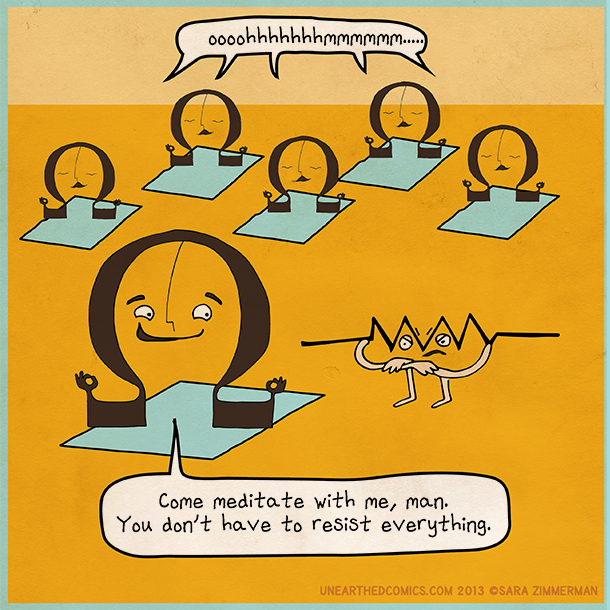So, let’s keep this casual.

What the heck is that?
That is a circuit. Don’t be scared of it.
Circuits are used in electrical systems, which are used in airplane cockpits, sensor systems, your smart phones, and other fancy equipment. It is a necessary aspect of technology that can help demistify how electricity works.

The absolute most basic circuit consists of 2 things.
(1) Voltage (this is the source of electric potential)(V)
(2) One Resistor (R)
When electrons flow through the circuit, it creates what is called a Current (I)
These three are all related to Ohm’s Law [ V = I*R ]
What do these words mean?
__________________________
Hopefully you have a good imagination.
Imagine you as a single electron are speeding through a “tube” or a “metal wire” when suddenly a disgruntled coworker “tightens the tube”, or increase the “resistance.” A tighter tube only means you’re gonna slow down. In other words, your “flow (current)” will decrease.
Voltage = (Current) * (Resistance)

“But I still don’t get it!”
If the electric potential V is kept the same in a circuit, which it usually is, increasing the resistance in the beginning of the circuit means the current has to decrease in order to keep the voltage the same at the end of the circuit. Voltage and current are proportional.
The converse also holds true. If the current were to increase, in order to keep the voltage the same, the resistance would have to decrease. Voltage and current are proportional.
As for units.. when subjected to a voltage of ONE Volt (V), ONE Ohm (O) allows the transmission of ONE Ampere (A) of current
Summary:
Voltage = V = “Electric Potential” = Proportional to Current; Inversely Proportional to Resistance
Current = I = “The Flow of Electrons” = Proportional to Voltage; Inversely Proportional to Resistance
Resistance = R = “Tightening the Tube” = Inversely Proportional to Resistance; Inversely Proportional to Current
